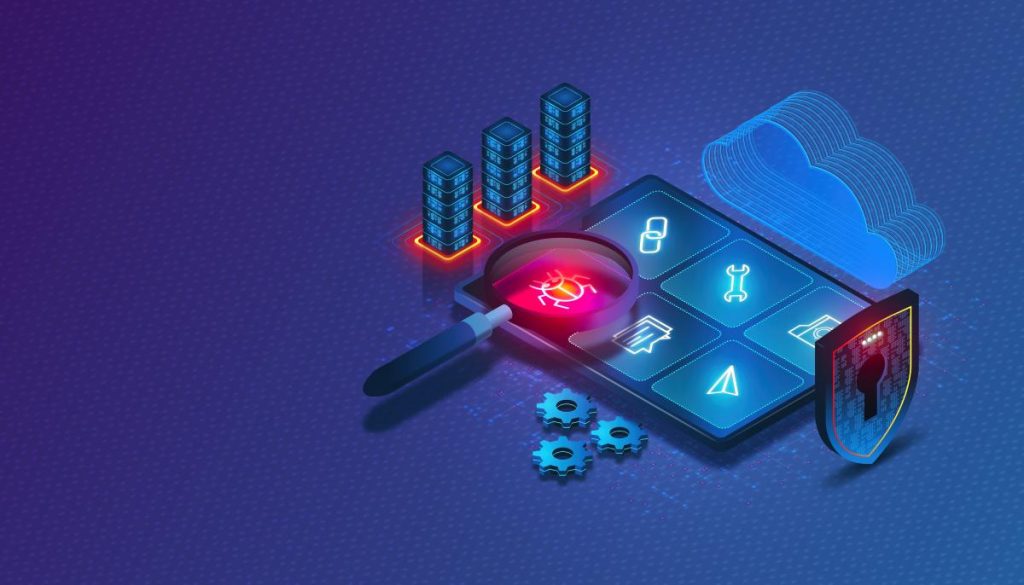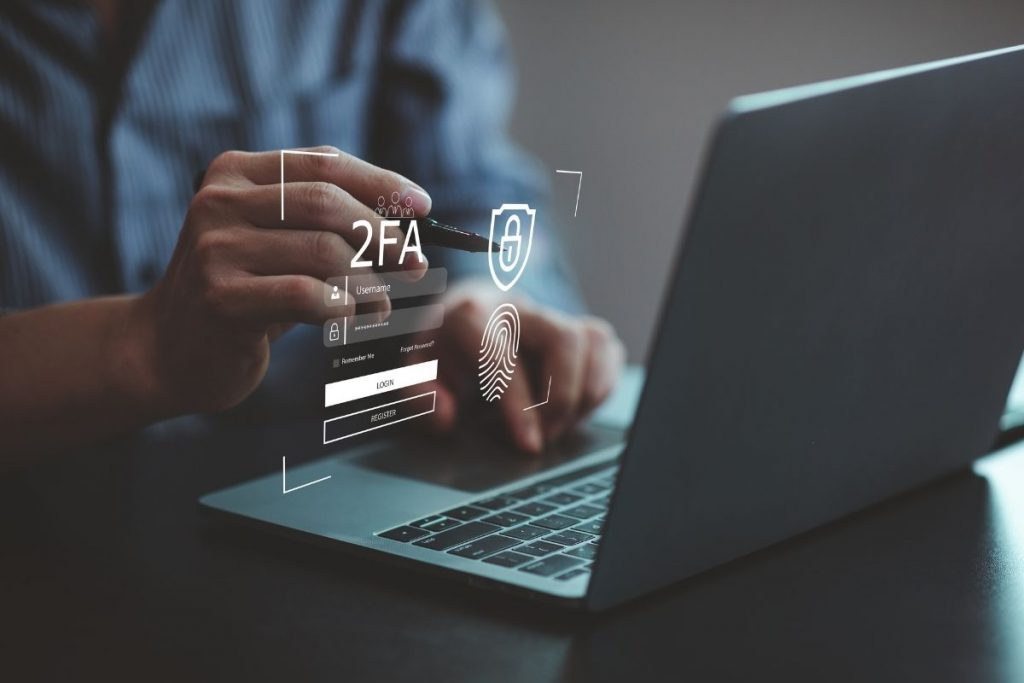About 30,000 websites are hacked each day globally, according to Zippia‘s “30 Important Cybersecurity Statistics [2023]: Data, Trends And More” stat recently. For every 39 seconds, there would be cyber attacks, with 43% of those targeting small businesses. The tendency of security breaches is becoming more frequent and severe. It’s at an alarming rate for organizations to stay awake and constantly be aware of the security danger out there, as things can go ugly and outrageously expensive once you unintentionally let your guard down.
Therefore, conducting regular vulnerability scans to identify security weaknesses and stay afloat with IT systems and applications should be taken seriously by businesses. Vulnerability scanning is the process of assessing potential vulnerabilities in a system or application. However, this process can take time to keep up with, requiring businesses to put in a tremendous effort not just to understand all its principles inside and out but also to stay up-to-date and ahead with the latest emerging technology.
You might have heard about vulnerability assessment. Then, what are the differences between a vulnerability assessment and a vulnerability scan? If you have not explored our previous blog regarding vulnerability assessment, jump over to it now and get in-the-know zone, as today we’ll be discovering the land of vulnerability scans, its main types, challenges, benefits, and what you should be looking for in vulnerability scanning and risk assessment tools. All that good stuff is right here, starting with your first scroll!
Vulnerability Scanning - the definition
Generally, vulnerability scanning is inspecting potential vulnerabilities and detecting possible weaknesses and misconfigurations in a computer system or network that can be exploited in a cyber attack. A high level of software testing automation can conduct this. Vulnerability scanning acts as the front line in vulnerability management.
Once the potential vulnerabilities have been identified, the system administrators can take appropriate actions to fix them. Vulnerability scanning is typically assessed regularly to ensure that systems remain secure.

The primary function of vulnerability scanning is to enable organizations to detect, assess, and address potential security weaknesses in their IT system, network, or application.
The main vulnerability scans categories
Given Vulnerability Scanning is important in identifying the early stages of potential security threats, its proactive approach helps diminish and reduce the impact they might otherwise escalate. Here are the two main categories of vulnerability scanning techniques:
Credentialed Scans vs. Non-Credentialed Scans
Credentialed and Non-Credentialed Scans are the two most common types of Vulnerability scanning found. Both serve to identify and remedy anything prone-to vulnerabilities, but they have distinctive differences.
Credentialed Scans, also called “internal scans,” require authenticated access to gain an in-depth, comprehensive, and valuable view of vulnerabilities within a network. These scans use privileged access, usually administration access, to identify vulnerabilities hidden from the network outsiders, and can be performed internally or externally, in terms of the environment.
By leveraging authenticated access, credentialed scans can reveal and expose all the vulnerabilities lurking beneath the surface of a complex system, even in the sensitive areas that other types of vulnerabilities won’t be able to navigate to, making itself a step ahead and tend to be more accurate than a non-credentialed scan.
On the other spectrum, there are the Non-Credentialed Scans, which are often referred to as “external scans.” They are automated and do not involve authenticated access. These scans are conducted externally, outside of the network, subjectively to identify vulnerabilities visible to the public or accessible from external attackers.
These non-credentialed scans aid organizations in assessing the current state of their public-facing security systems, such as web applications, and prioritize efforts to get these vulnerabilities sorted out. Since these scans are carried out externally, relying heavily on network information level and publicly accessible information, it does take quite some time, much longer than the credentialed scans. The output might offer different detail and specifics than other alternative vulnerability scans.
These two specific categories of vulnerability scans are recommended to be implemented back-to-back to reflect both internal and external potential threats that developers might overlook during the production stage.
Others
In addition to the above, there are various ways that vulnerability scans can be categorized into and classified based on their specific use case, such as:
- External Vulnerability Scans: External Vulnerability Scans – or often known as Perimeter Scanner – assess the security structure of an organization from an attacker’s perspective. The method strives to close off all the entry points of intrusive attacks, weaknesses from the network’s firewall, etc. These external vulnerability scans help prioritize remediation efforts and reduce the attack surface by focusing on examining publicly accessible networks.
- Internal Vulnerability Scans: Internal Vulnerability Scans evaluate the security of the internal network, i.e., the systems and assets that reside inside the organization’s network, by identifying potential vulnerabilities such as missing patches, weak credentials, and open ports and provide recommendations on how to resolve them. These scans are conducted from the insider’s perspective, within the organization’s network, the polar opposite of external scans, and provide insight into the security posture of assets that cannot be examined through external scans.
- Environmental Scans: The name of it might have said it all. These scans are specialized to assess the specific environment surrounding the businesses, whether cloud-based, mobile devices, websites, IoT devices, etc., and explore the potential environmental threats involved. It considers various components that affect how an organization might be targeted, including economic factors, cybersecurity regulation, geographic location, and other organizational factors. Environmental scans are primarily used to ensure compliance and evaluate an entire network system as a whole.
- Intrusive vs. Non-Intrusive Scans: Another significant differentiation in vulnerability scanning is whether the scan is Intrusive or Non-Intrusive. An Intrusive scan involves actively software quality testing the system to discover vulnerabilities. This type of scan requires permission to access specific credentials and simulates actual attack techniques to identify weaknesses in the system. While a Non-Intrusive scan, on the other hand, is a less intrusive scan that simulates an attack without testing system operations. Non-intrusive scans can discover possible vulnerabilities without affecting system operations or creating any potential damage.
Vulnerability scanning challenges
Everything comes with challenges, and vulnerability scanning isn’t an exception. Here are a few that stands out:
- A scan only represents a moment in time: Since the security landscape continuously evolves, a vulnerability scan will quickly become outdated. A system that passes a scan today is not necessarily secure tomorrow and requires organizations to update their vulnerability scanning and monitoring techniques continuously.
- A scan may need human input or further integrations to deliver value: Manually interpreting scan results and configuring the system could be overwhelming, and determining the severity of a vulnerability requires human input. This challenge means vulnerability scanning should be part of a comprehensive cybersecurity strategy integrating technologies and human decisions.
- A credentialed scan may require many privileged access credentials: Performing a credentialed scan produces a more comprehensive scan than a non-credentialed scan, but it comes at the cost of multiple privileged access credentials. Organizations must have a robust credential management process to achieve a trusted scan.
- A scan only identifies known vulnerabilities: Unknown vulnerabilities, zero-day attacks, and other sophisticated attack vectors are neither vulnerable to patching nor listed as a known vulnerability in CVE standards.
To address some of these challenges, organizations can implement a multi-disciplined approach to protect their network and systems and keep staff trained in the latest scanning practices.
The benefits of vulnerability scanning
Despite these challenges above, vulnerability scanning remains an effective irreplaceable cybersecurity strategy thanks to these benefits that it lives up to:
- Threat Detection Improvement: Vulnerability scanning helps organizations identify known and unknown vulnerabilities which may have gone unnoticed in manual security assessments.
- Cost-Effective: An automated vulnerability scanning tool is more cost-effective than manual security assessments, which require a significant investment of time and resources.
- Risk Mitigation: By identifying vulnerabilities proactively, vulnerability scanning enhances risk mitigation efforts by allowing timely remediation and preventing potential data breaches.
- Productivity Improvement: Automated vulnerability scanning minimizes the impact on employee productivity by avoiding lengthy manual security assessments and allowing for a faster response to potential threats.
- More robust Security Posture: By regularly scanning for vulnerabilities, organizations can maintain a strong security posture and reduce the risk of experiencing a data breach or a security incident.
What to look for in vulnerability scanning and risk assessment tools
As technology and cyber threats continue to elaborate progressively, vulnerability scanning and risk assessment tools shall become the fundamental evaluation and qualification for organizations to look for in software/application/website development production context and in securing their own networks and data. With the unlimited options in vulnerability scanning tool providers, it can be stressful to differentiate and justify which tools are best without actually experiencing them on your own. To save you time and effort, down below are the highlighted features and capabilities you should be aiming for in these tools:
- Updates frequency: Regular updates are everything, including vulnerability database updates, software updates, and security patches.
- Quality and quantity of vulnerabilities: Choose a vulnerability scanning tool that can accurately identify known and potential vulnerabilities and assess the severity and impact of each threat.
- Actionable results: The vulnerability scanning tool should provide actionable results, recommended remediation steps, and prioritization of security threats based on the level of risk and impact.
- Integrations: The tool should be easily integrated with other security solutions (a must! This would eliminate all the hectic and manual work), including SIEM and SOAR, to automate threat identification and response across multiple security tools for comprehensive protection.
Regular scanning provides organizations the information they need to establish a strengthening and secured technological infrastructure. Looking ahead to the future, SHIFT ASIA, with expert teams who have extensive years of experience in vulnerability assessment services, is committed to delivering customized vulnerability assessments that accurately and effectively identify potential vulnerabilities stubbornly existing or yet to be discovered in your organization’s assets, applications, and overall network security. With the right tools, strategies, and mindset, organizations keep thriving to stay ahead of the pitfalls, safeguarding their systems from malicious attacks. Contact the Shift Asia team for prompt assistance and get your complete vulnerability scanning today!
ContactContact
Stay in touch with Us








